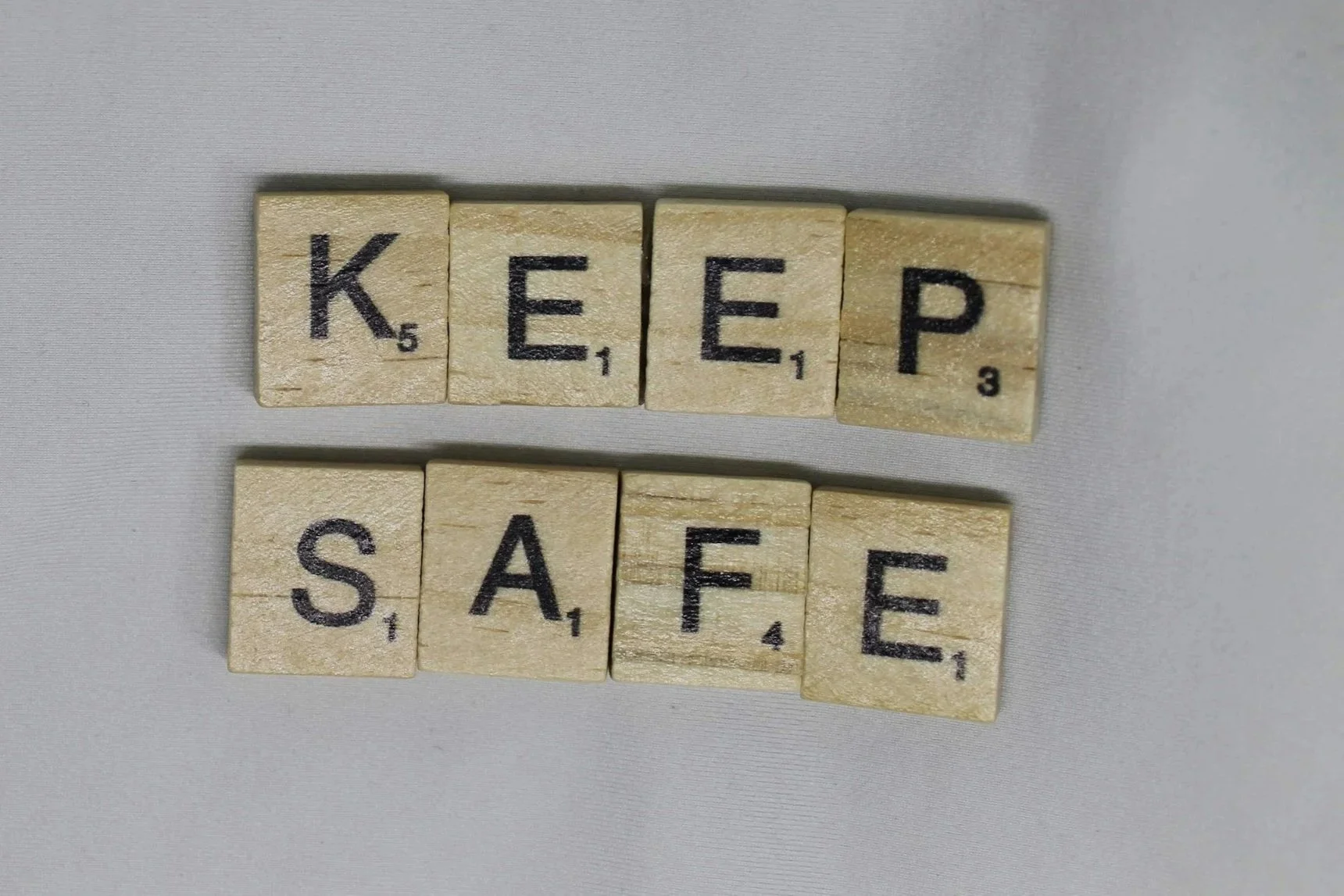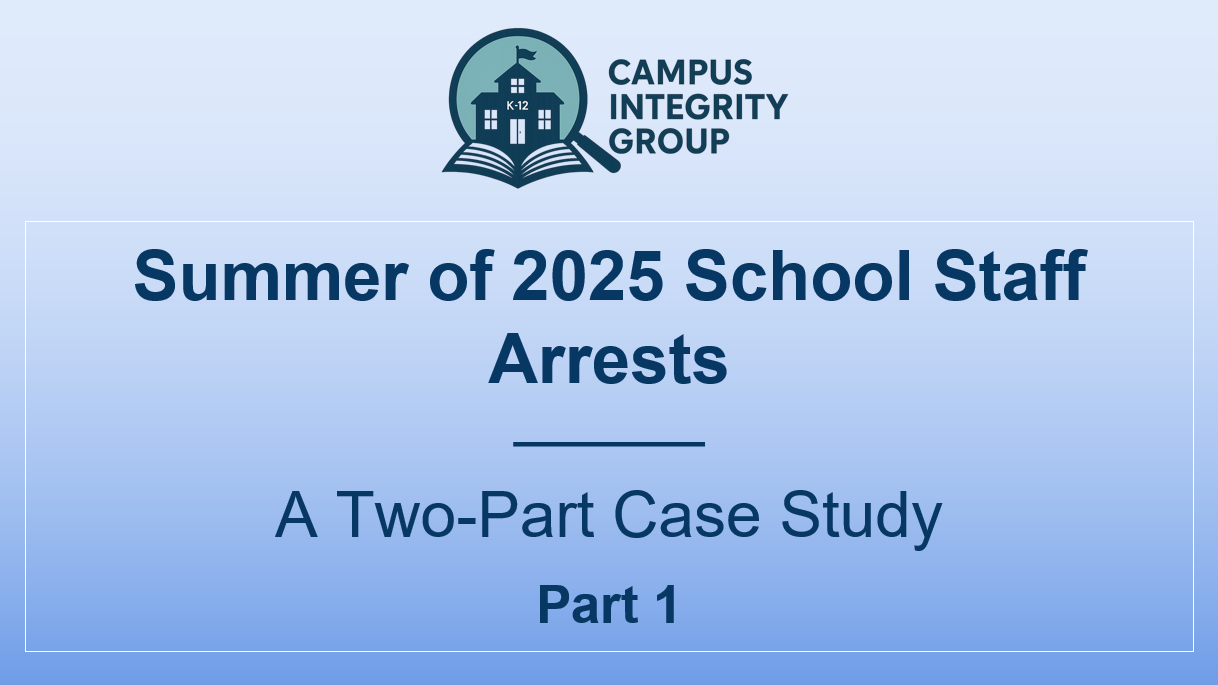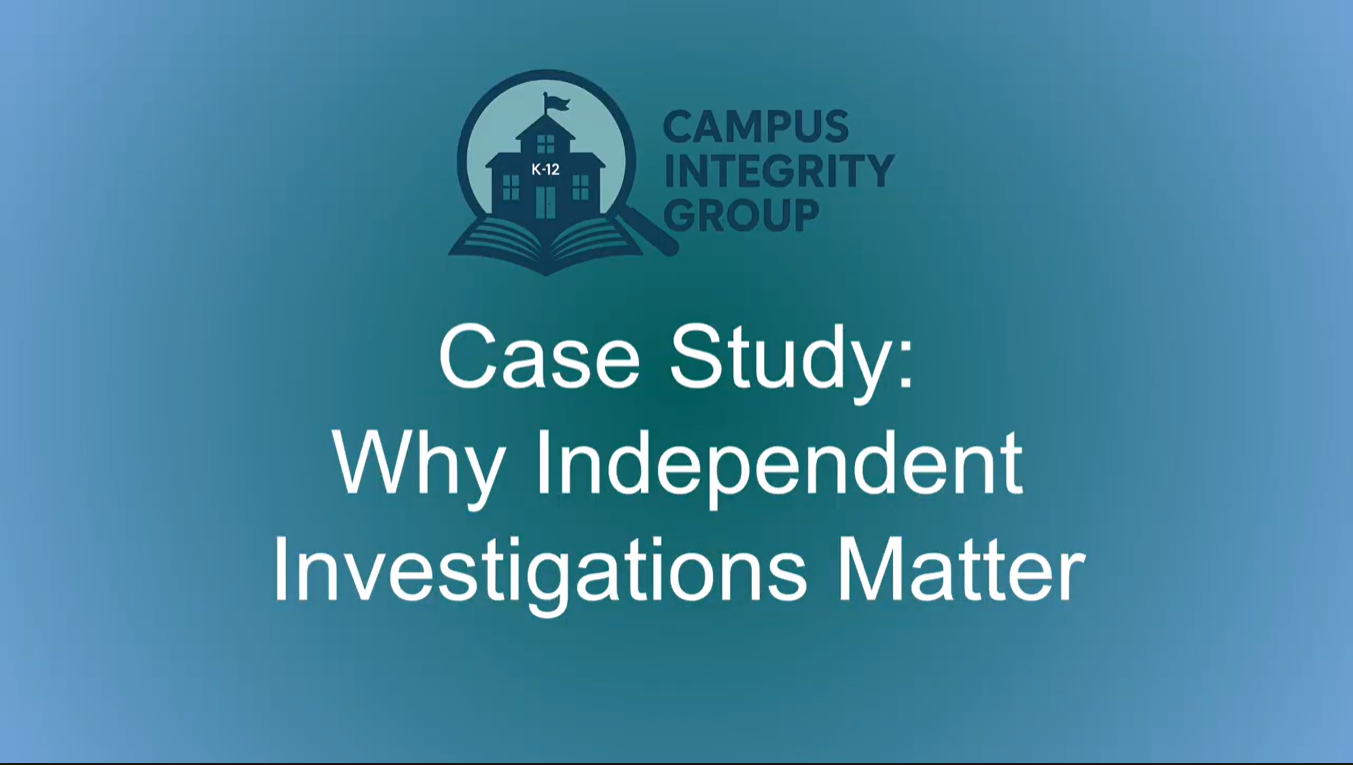How to Avoid Lawsuits with Training and Immediate Response
In today’s education and youth-serving environments, one allegation of misconduct can escalate quickly — sometimes leading to prolonged student harm, costly lawsuits, damaged reputations, and public distrust. While no organization can eliminate all risk, two key strategies consistently reduce liability: effective training and immediate, informed response.
1. Proactive Training: Your First Line of Defense
Well-trained staff are your best safeguard against misconduct — and against the mistakes that turn manageable situations into legal battles. Comprehensive training should:
Cover more than just the basics. Go beyond policy recitation. Teach staff how to recognize early warning signs, document concerns accurately, and respond appropriately.
Be role-specific. Investigators, administrators, teachers, coaches, and support staff all face different risks. Tailor training to those realities.
Include real-world scenarios. Use case studies to help staff think through complex situations before they happen.
Reinforce regularly. Annual refreshers and targeted mid-year trainings keep policies top of mind.
Learn more about proactive training in our previous blog and YouTube posts, available in our Resources Library.
2. Immediate, Informed Response: Stopping Problems Before They Escalate
Even with strong prevention efforts, it is impossible to avoid all risk of staff misconduct. By creating an image of reliability and trustworthiness, serious offenders can hide in plain sight, making it critical for adults to remain vigilant, trust their instincts, and challenge behaviors that cross professional or personal boundaries.
How you respond in the first hours and days is critical to protecting your students from harm (or further harm) and avoiding liability for any misconduct by bad actors.
Key elements of an effective immediate response include:
Prompt action. Acknowledge and address the allegation right away — delays can appear as indifference or cover-up.
Follow established procedures. Ensure your team knows exactly what steps to take, from notifying authorities to preserving evidence.
Separate alleged parties when necessary. Taking reasonable steps to implement safety measures, including removing the alleged perpetrator from school when necessary to protect student and staff safety while additional information is collected.
Engage qualified investigators. An impartial, experienced investigator — whether internal or external — adds credibility and helps ensure procedural fairness.
Communicate appropriately. Be transparent with stakeholders as allowed by law, without compromising confidentiality.
The Payoff: Reduced Risk and Increased Trust
Courts and regulatory agencies look closely at whether institutions took reasonable steps to prevent and address misconduct. Demonstrating that you invested in robust training and acted immediately and appropriately can reduce legal exposure, protect your community, and maintain public trust.
How you respond in the first hours and days is critical to protecting students from harm—or further harm—and to reducing your school’s risk of liability for misconduct by bad actors. By building a culture of preparedness, you don’t just avoid lawsuits—you foster a safer, more accountable environment for everyone you serve.
Contact Campus Integrity Group today—we can help you create step-by-step action plans, clear procedures, and effective crisis management strategies to ensure your team is ready before an incident happens.
Want to learn more? Check out our Case Studies in our Learning Hub that offer practical guidance based on real-life situations.





